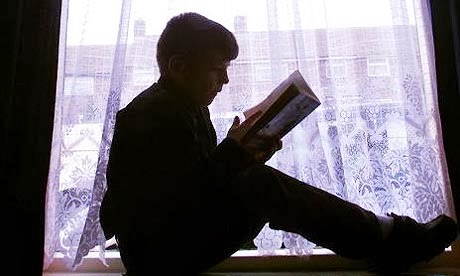 FREE CHOICE POETRY
FREE CHOICE POETRY
Florian, Douglas. Shiver Me Timbers: Pirate Poems & Paintings. Illustrated by Robert Neubecker. New York: Beach Lane Books, 2012.
Douglas Florian’s Shiver
Me Timbers: Pirate Poems and Paintings is full of fun and color. The poems are filled with rhyme and rhythm,
making these poems a delight to read aloud.
Listening to these poems allows the readers’ imaginations to run wild.
“Blackbeard” has the sound of a limerick, but, like other
poets before him, Florian used a little poetic license. Limericks typically have ending rhymes in the
first, second, and fifth lines, with the third and fourth lines rhyming with
each other. The stanzas in Florian’s
poem have ending rhymes in second and fifth lines along with rhymes in third
and fourth lines.
The illustrations are bold, colorful, and a bit
cartoonish. They hold a definite appeal
for children and, when coupled with Florian’s poems, keep children moving
through the pages.
There is no table of contents or index, but it doesn't feel as if anything is missing. The poems could be read in any order and still have the same effect...giggling, laughter, and smiles. Even though the poems do not employ a myriad of forms and techniques, the poems are fun and children will love them.
There is no table of contents or index, but it doesn't feel as if anything is missing. The poems could be read in any order and still have the same effect...giggling, laughter, and smiles. Even though the poems do not employ a myriad of forms and techniques, the poems are fun and children will love them.
“Me, Pirate”
by Douglas Florian
Me nose is long.
Me ears look wrong.
Me face makes children cry.
Me scraggly beard
Is very weird.
Me breath makes flowers die.
I am a brute.
Not one bit cute.
A really rotten egg.
I’m four feet high,
Missing one eye.
I have a wooden leg.
Me skin has moles.
Me teeth have holes.
I’ve gnarly, knobby knees.
Me voice is hoarse,
But what is worse,
Me foot smells like Swiss cheese.
I’m bony thin,
Ugly as sin.
I’ve got a six-inch scar.
But never –
the –
less,
Despite
all
me
mess,
I am a movie starrrr!
Before reading this poem:
Ask the students to describe a
pirate. While reading the lines of the
poem, have students draw the pirate described in the poem.
Follow-up:
Ask students to write their own
description poem. Choose a item and list
everything you can think of to describe that item. Use the descriptions to write a poem in any
poetry form.



